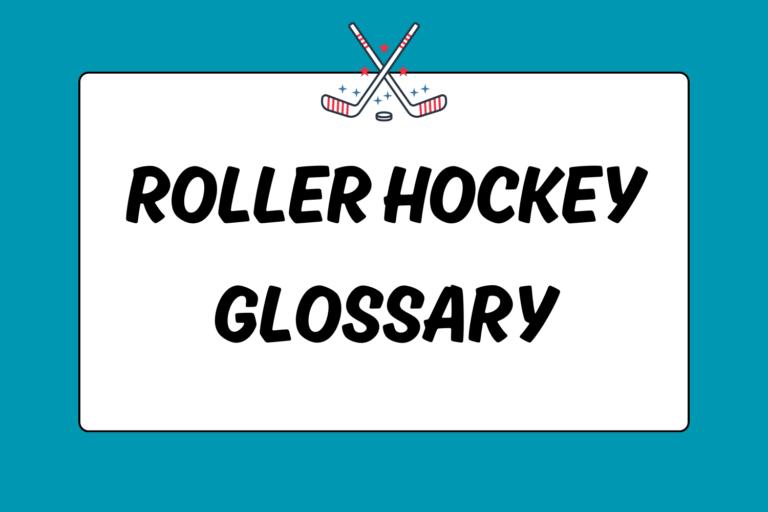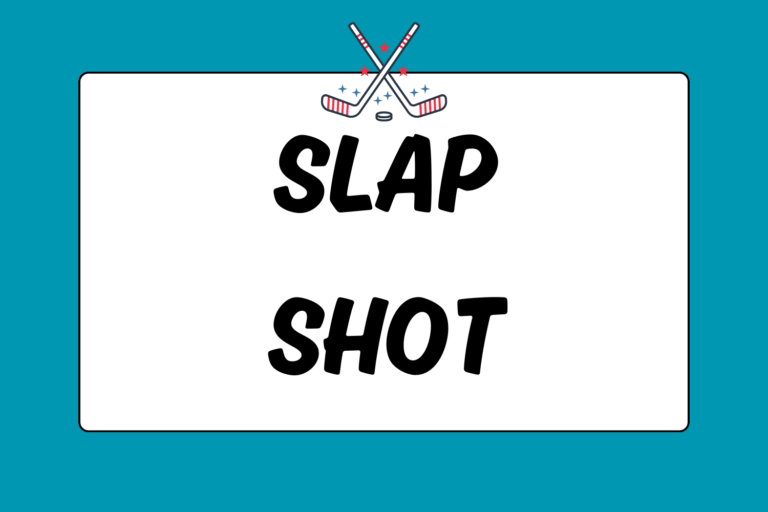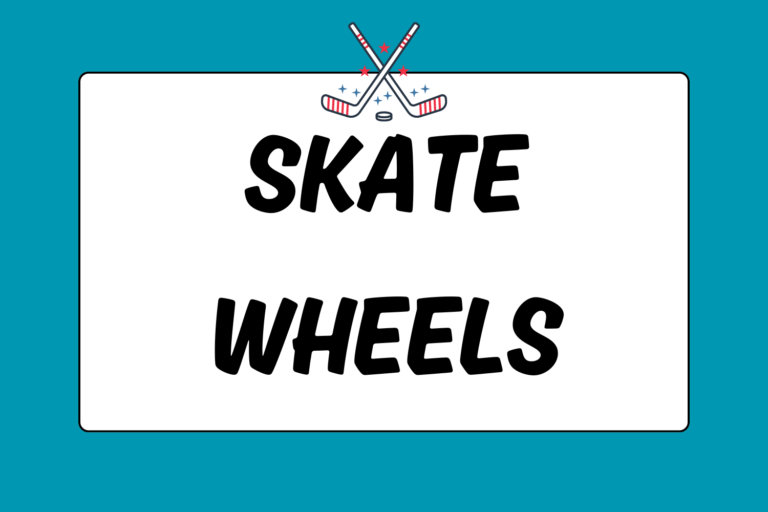A group of players skates around trying to guide a little flat disk past the big guy in front of a netted rectangle to score a goal. The team that accomplishes that feat more times than the other team wins. Seems simple, right?
On the surface, the only noticeable difference between roller hockey and ice hockey might be exactly that – the surface. One is played on ice; one is played on dry land. However, under closer inspection, the differences between roller and ice hockey pile up rather quickly.
The Basics of Game Play
Each roller hockey team has five players on the rink at a time: Four regular skaters and one goalie. That’s one fewer player than in ice hockey. Despite the fact that there are only five total players (per team) on the rink at any time, each team is comprised of around 15 total players who are allowed to substitute in and out from the bench. Substitutions, unlike most sports, can happen at any time during play or on a stoppage.
While ice hockey is universally comprised of three periods, roller hockey utilizes two equal halves (though some leagues still use three periods). The length of these halves varies based on the level of play; higher skilled leagues will play up to 30 minutes a half with the clock only running during play. Lower level youth leagues will have shorter periods of 12 minutes, and the clock might run even while play is stopped.
Different leagues also handle tied scores at the end of regulation time differently. Some leagues end evenly scored games as draws, some play extra overtime periods. Others some elect to go to a shootout.
The Rink
Organized roller hockey is played on a smooth, flat, enclosed surface. The entirety of the playing surface (and sometimes the building it’s located in) is called the rink. All rinks have some key features with which everyone should be familiar.
- Goal: The goal in roller hockey is 6 feet wide and 4 feet tall. It has a red metal frame and white mesh netting. There’s one on each end of the playing surface.
- Rink Surface: Any smooth, flat surface works well for roller hockey. Hardwood flooring used to be common, but recently, high quality concrete and smooth, plastic, tiled floorings have been developed specifically for roller hockey. Plastic is the most commonly used surface.
- Boards: The boards are the walls that enclose the playing surface. They are usually at least six feet high.
The Equipment
Roller hockey is one of the most equipment heavy sports on earth. Players obviously need skates, sticks, and a puck, but that’s just the beginning. Let’s take a look at all the equipment that goes onto a roller hockey player before they hit the rink. Keep in mind, the safety gear isn’t a suggestion, it’s required:
Puck
Every game needs a puck! Roller hockey pucks are 1 inch thick and 3 inches in diameter. They are made of plastic instead of vulcanized rubber, and are thus slightly lighter than ice hockey pucks. This allows small players to fire shots faster than they would be able to shoot an ice hockey puck. Pucks glide on Teflon-infused plastic runners, allowing them to move as quickly on the smooth rink surface. They are most often red or black, but come in a multitude of (often bright) colors.
Skates
Every player wears a pair of inline roller skates. These almost always have four polyurethane wheels (goalie skates are the exception). Modern inline skates are made of cloth, plastic, leather, metal, and composite materials – a huge improvement on the all plastic skates of the ’80s.
Sticks
Sticks consist of two parts. The shaft is the long, straight part. The blade is the curved part at the end of the shaft. Sticks can be made of wood, aluminum, fiberglass, carbon fiber, and most recently, titanium.
Helmet
You have to protect your noggin. Helmets are hard plastic with a dense foam lining. They strap under the chin. Leagues often require players to wear a full metal cage over their face, though sometimes players are allowed to wear a clear plastic visor just over the eyes … or even no facial protection at all!
Gloves
Gloves are made of nylon and leather with plenty of foam padding. The inside of the glove has almost no padding. This allows players to maintain excellent control of their sticks.
Shin Guards & Elbow Pads
Shin guards are hard plastic pads that feature foam padding and strap onto the lower legs. They protect the front and sides of the leg from the ankle all the way to the knee. Elbow pads strap onto the arm at the elbow, and are made of hard plastic and foam padding, as well.
Pants
Roller hockey pants are thin and lightweight. They allow a wide range of mobility and never get in the way.
Jock/Jill
Jocks and Jills protect the midsection of males and females, respectively. This should go without saying, but never play without one.
Goalie Gear
Goaltenders have a lot more equipment than regular skaters. Among the added pieces of equipment are catchers, blockers, leg pads, chest protectors, goalie pants, a larger, goalie-specific helmet, and an especially wide stick. See the glossary for more information.
Positions
Roller hockey has three positions. Usually players find which position they excel at (or prefer) at a young age and stick to it.
Forwards
The only thing forwards like more than scoring goals is scoring lots of goal. They are mostly responsible for offense. Forwards need to have accurate shots and be fast skaters.
Defensemen
Defensemen’s main goal is to disrupt the other team’s forwards. They need to be able to make accurate, long range passes and take hard shots from long distances. Smarts and precision are more important for defensemen than physical talents.
Goaltenders
Goalies are the last line of defense. They stand directly in front of their team’s goal and do anything they can to stop the opposing team from scoring. Goalies must be fearless, agile, and have excellent reflexes.
New Game, New Rules
Here are the primary differences between roller hockey and ice hockey:
- No offsides: Players may enter the offensive zone before the puck does.
- No icing: Dumping the puck from your own defensive zone is allowed.
- No checking: Incidental contact when playing the puck is allowed, but players can’t intentionally body check players on the other team.
- Less equipment: Players don’t wear any shoulder pads. Further, roller hockey pants are more akin to track warm-ups than hard, padded ice hockey pants. Since there is no checking in roller hockey, these pieces of equipment serve little purpose.
- Fewer officials: Where ice hockey often has four officials, roller hockey usually only utilizes two. This is made possible by the lack of offsides and icing.
- Fewer players: Player rosters in ice hockey sometimes feature up to 12 forwards, 6 defensemen, and 2 goalies. Roller hockey teams usually play with 6 forwards, 6 defensemen, a couple players who can alternate between forward and defense, and 2 goalies. The max number of players on a roller hockey team is usually 15 or 16.
- Halves, not periods: Roller hockey usually sticks to a two-half format, where ice hockey games consist of three periods.
- Lighter puck: The puck has the same dimensions as an ice hockey puck, but is made of plastic and, therefore, is lighter. This allows for faster shots from smaller players.
Penalties
Aside from the players, the two referees are the only other people allowed on the playing surface. Referees wear inline roller skates, shin pads, and helmets. This allows them to remain safe while keeping up with the action of the game. Further, refs will always wear black-and-white striped shirts to differentiate them from the players. Their job is to patrol the rink and call any rule violations (known as penalties) and to signal when a goal is scored.
Penalties are one of the most interesting aspects of roller hockey as a sport. When a penalty is committed, the guilty player must leave the rink for a set amount of time. During that time, that player’s team is forced to play on without them. The penalized player must go to an enclosed “penalty box” and watch while their team is down a player. This leads to exciting situations where unevenly matched teams play against each other. The shorthanded team is said to be on the “penalty kill,” while the full-strength team is on the “power play.” If the team on the power play scores, the penalized player is allowed to leave the penalty box early.
“Minor penalties” are called when players act in a dangerous, unsportsmanlike, or unfair way. Players have to go to the penalty box for two minutes when they are given a minor penalty. Some examples of minor penalties are:
- Checking: Intentionally hitting an opposing player with one’s shoulder or hip to knock them off the puck. A staple of ice hockey; a penalty in roller hockey.
- Tripping: Using a stick, skates or any part of one’s leg to knock an opponent to the ground.
- High-sticking: Any time a player’s stick contacts another player’s body above the shoulders.
- Slashing: Swinging a stick and hitting another player, or swinging one’s stick against an opponent’s stick, causing it to break.
- Holding: Grabbing and holding a player’s body or equipment as a means to impede their movement.
- Hooking: Using a stick to grapple a player and impede their movement.
“Major penalties” are called when players recklessly or intentionally act to injure another player. These are more severe, and the guilty team must skate short one player for five minutes. If the play was dangerous enough, the offending player will often be ejected from the game. Unlike minor penalties, the penalized player is not allowed to leave the box if their team is scored on. Some examples are:
- Fighting: Removing one’s gloves and punching another player.
- Spearing: Stabbing an opposing player with the blade of one’s stick.
- Charging: Taking more than two or three strides before initiating a body check.
- Boarding: Pushing a player into the boards while the player is facing the boards, but not quite touching them.
Penalties called on players with a complete disregard for safety or an actual intent to injure will often be accompanied with misconduct penalties. These range from removing the player for extended minutes without penalizing their team, or even ejecting the player altogether.
USA Hockey vs. NCRHA
The two largest governing bodies for roller hockey in North America are USA Hockey Inline and the National Collegiate Roller Hockey Association (NCRHA). USA Hockey Inline governs nearly all youth hockey leagues and recreational adult leagues in America, while the NCRHA covers all intercollegiate play. While the two organizations are partners, the NCRHA has a few rules differences to reflect the higher level of competition and the increased funding of university-based hockey programs. Use this page as a guide, but, because rules change depending on sanctioning bodies, be familiar with your specific league’s rules.
Roller Hockey Around the World
Globally, roller hockey is governed by the International Ice Hockey Federation (IIHF). The IIHF solely uses the term “InLine Hockey” to describe the sport and differentiate it from quad roller hockey, which is still played in some European and South American countries. The IIHF InLine Hockey World Championships have been held since 1996 (with the exception of 1999). The event features the top eight ranked roller hockey national teams. Finland and the United States lead the total medal count with 10, but Sweden leads the gold medal race with six.
View the IIHF’s rulebook here.





